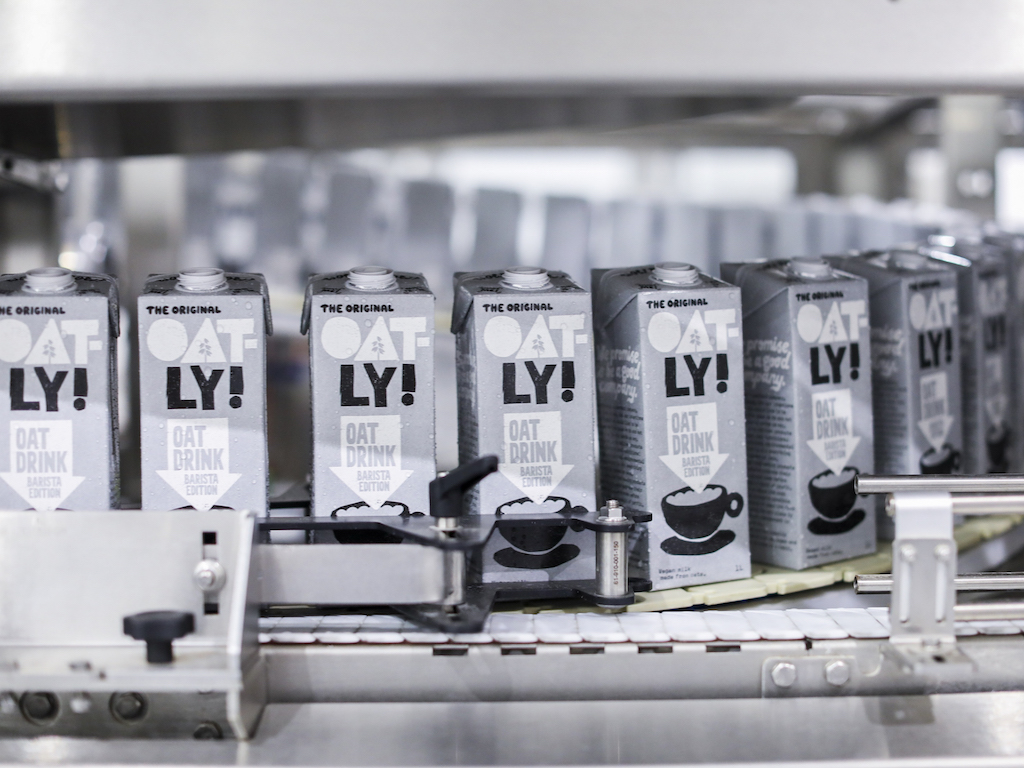3 Mins Read
Swedish oat milk giant Oatly is restructuring its manufacturing and reducing headcount in an effort to reduce costs.
Oatly, the darling of the dairy-free sector, has announced plans to address supply chain issues and overhead following less than stellar third-quarter sales, the company said last week. Oatly saw more than $108 million in losses in the quarter ending September 30th—nearly triple the losses from the same time frame in 2021. The losses came as quarterly sales were up about seven percent year-on-year rising from $171 million to more than $183 million.
Oatly readies for a reset
Calling the shifts a ‘reset plan, Toni Petersson, Oatly’s chief executive officer, told investors and reporters on a call last week that the company would be adjusting its supply chain strategy and simplifying the organizational structure.
The company says it will shift to a hybrid manufacturing model to reduce production costs across Europe, the Middle East, and Africa (EMEA).

“This move towards a more hybrid network is expected to significantly reduce our future capital expenditures and have a positive effect on our cash flow outlook,” Petersson said.
The company will reduce headcount across the EMEA region to address 25 percent of its costs, Oatly’s CEO said.
“By doing this, we expect annual savings up to $25 million from the reorganization, which should take effect starting in Q1 2023,” Petersson said, without revealing details about what the restructuring would look like. “We have identified incremental opportunities in the rest of the organization from which we expect up to $25 million in additional annual savings in the first half of 2023.”
The company says it needs more capacity to support its growth, and the restructuring will address issues at the Utah manufacturing plant in the U.S. that reduced production. It will also address covid restrictions across Asia, and more than $16 million in foreign exchange costs.
“Fundamentally, we will need more capacity to support growth,” he said. “This gives us flexibility to add capacity faster.”
Christian Hanke, Oatly’s chief financial officer, said the company’s sold volume for the third quarter of 2022 amounted to 126 million liters compared to 110 million liters last year, an increase of 14.5 percent. “We experienced broad-based growth with seven percent sales volume growth in EMEA, 17 percent growth in (the) Americas and 38 percent volume growth in Asia.”
Growth despite downturns
Petersson says Oatly is finding it easier now to connect with strategic co-packers than prior to the start of the pandemic, especially since the popular beverage company has scaled and grown its business in recent years. “So, meaning that we have more qualified partners to work with in terms of food safety, quality, and security of supply,” Petersson said.

Oatly joins other vegan companies including California’s Beyond Meat and Impossible Foods that have restructured recently amid declining sales across the category. Beyond Meat recently cut 19 percent of its staff and Impossible Foods reduced its headcount by six percent.
Oatly reduced its remaining 2022 sales projections to $700 million to $720 million—an increase over 2021 of nine percent to 12 percent.
“For fiscal 2022, we are lowering our outlook primarily to reflect COVID-19 pressures negatively impacting sales in Asia, operational challenges in the Americas which limit our ability to accelerate sales momentum, and continued foreign exchange headwinds,” Petersson said.
“We believe these challenges are transitory and that we have significant opportunities for growth as these headwinds subside,” he said. “In the meantime, we have taken actions to adjust our supply chain network strategy and simplify our organizational structure for a more balanced growth equation moving forward.”
Lead image courtesy of Oatly.




